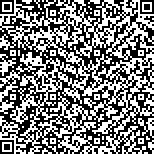| 摘要: |
| 在合成孔径雷达(Synthetic Aperture Radar, SAR)海面风场反演中, 基于风条纹影像纹理特征的海面风向反演方法精度高, 但是依赖于图像风条纹的存在, 而外部风向信息与SAR 资料时空分辨率不易匹配、精度较低, 从而影响大面积、高分辨率海面风场反演的精度。针对此问题, 提出一种将SAR图像风条纹线性纹理特征与外部风向信息相结合的星载SAR 海面风向获取方法, 在SAR 影像线性纹理特征明显的区域采用二维连续小波变换得到高精度的海面风向, 其余区域采用与之时空相匹配的数值预报模式风向填充; 并利用地球物理模型函数进一步得到海面风速, 进而实现高精度、大范围海面风场的反演。为验证本文方法的有效性, 利用ENVISAT/ASAR 数据进行风场反演试验, 并将反演结果与浮标实测数据进行比对。结果表明: 在线性纹理特征明显的区域, 小波方法的反演精度优于快速傅里叶变换(FFT)法和数值预报模式风向; 外部风向精度略低, 但与SAR 观测资料时空匹配性较好, 弥补了风条纹风向的不足。二者的结合为星载SAR 海面风场反演的业务化应用提供了支持。 |
| 关键词: 星载SAR 小波变换 外部风向 海面风场 |
| DOI:10.11759/hykx20141027002 |
| 分类号: |
| 基金项目:国家自然科学基金(41475019; 41375029) |
|
| Ocean wind retrieval from spaceborne synthetic aperture radar images based on wind streaks and external wind direction |
|
|
| Abstract: |
| The accuracy of synthetic-aperture-radar (SAR)-retrieved ocean wind direction based on wind streak texture features is high, but it heavily relies on wind streaks; moreover, it is not easy to match the space-and time-scale resolutions of low-precision external wind directionwith SAR data. This affects the retrieval accuracy of large-area and high-resolution sea surface wind field data. Therefore, in this study, we propose a method for retrieving ocean wind data from spaceborne SAR images, which combines wind streak texture features with the external wind direction. We apply a two-dimensional continuous wavelet transform to obtain accurate surface wind direction in areas where the texture features of SAR imagesare obvious and derive the wind direction from a numerical weather prediction model to fill the rest of the area. We then use a C-band empirical model to calculate wind speed, thus retrieving sea surface wind field datawithhigh precision and at a broad range. To verify the validity of this method, we perform a windfield retrieval experiment using ENVISAT/ASAR sounding data and compare the retrieval resultswith buoy data. The results show that the retrieval accuracy using the wavelet method is better than that using the fast Fourier transform method and numerical prediction models, while the external wind direction of slightly low precision agrees better with the SAR observation data in space and time scale and make up the deficiency of the wind streaks. A combination of both methods can support industry applications for ocean wind field retrieval from spaceborne SAR images. |
| Key words: Spaceborne synthetic aperture radar wavelet transform external wind direction ocean wind field |
